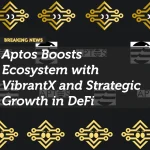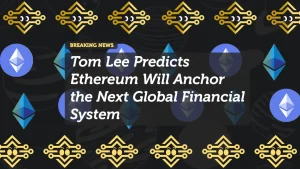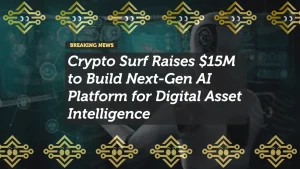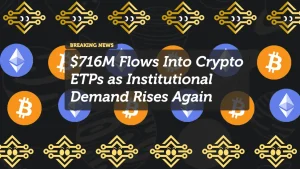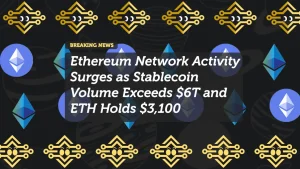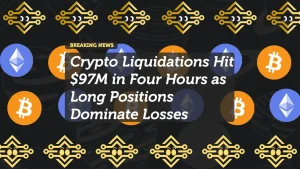
Ethereum’s 2024 Developments: Staking, Accumulation, and Upcoming Dencun Upgrade
Ethereum, the second-largest cryptocurrency by market capitalization, continues to evolve as 2024 approaches, with key trends pointing towards growing long-term confidence and important technical upgrades. While Ethereum faces increased competition from Bitcoin, Solana, and Avalanche, its staking activity, upcoming Dencun upgrade, and institutional adoption suggest that the blockchain has a positive long-term outlook.
In this article, we explore the latest developments in Ethereum staking, the impact of the Dencun upgrade, and how Ethereum’s market dynamics are shifting.
1. Long-Term Accumulation and Staking Surge
1.1 19 Million ETH Held by Long-Term Investors
As of late 2024, more than 19 million ETH are being held by long-term investors who are choosing to hold onto their tokens rather than sell. This trend highlights the growing confidence in Ethereum’s future, especially as it continues to dominate the smart contract and decentralized finance (DeFi) sectors.
1.2 29% of ETH Supply Staked
Ethereum’s staking activity has also surged, with nearly 29% of the total ETH supply being staked. Staking plays a crucial role in securing the Ethereum network and reducing token liquidity on exchanges. With more tokens locked in staking, the supply-demand dynamic shifts, reducing selling pressure and potentially contributing to price stability.
Staking rewards offer an incentive for Ethereum holders to lock up their tokens, further reinforcing long-term holding behavior.
2. Ethereum’s Dencun Upgrade: What to Expect
The Dencun upgrade, scheduled for early 2024, is the next major technical update for Ethereum, aiming to significantly enhance scalability and reduce transaction costs. This upgrade is particularly focused on improving the efficiency of Layer 2 rollups—a critical solution for scaling Ethereum to handle more transactions per second.
2.1 Key Features of the Dencun Upgrade
One of the most anticipated aspects of the Dencun upgrade is EIP-4844, also known as Proto-Danksharding. This proposal aims to reduce gas fees by introducing a new way to manage data for rollups, making it cheaper and faster to settle transactions on Ethereum’s Layer 2 solutions.
EIP-4844 is expected to make Ethereum more competitive against rival blockchains, especially those like Solana and Avalanche that are known for their low-cost, high-speed transaction capabilities.
2.2 Enhancing Competitiveness
The Dencun upgrade will strengthen Ethereum’s ability to compete with newer, faster blockchains by addressing its longstanding issue of high gas fees. With lower transaction costs, Ethereum could see a resurgence in DeFi activity, NFT trading, and smart contract deployment, further solidifying its role as the backbone of decentralized applications.
3. Challenges Ahead: Market Share Loss and Whale Activity
Despite its progress, Ethereum has been losing market share to competitors like Bitcoin, Solana, and Avalanche. Several factors contribute to this shift:
3.1 Decline in Whale Transactions
In recent months, Ethereum has seen a drop in whale transactions—large-volume trades typically carried out by institutional investors or high-net-worth individuals. This decline could signal a weakening in market confidence or a shift in investment towards other assets.
3.2 Ethereum Foundation Sell-Offs
The Ethereum Foundation has strategically sold off portions of its ETH holdings, which has had a dampening effect on investor sentiment. While these sell-offs are often seen as routine for funding ongoing development, they may contribute to short-term price volatility and a perception of reduced confidence from key stakeholders.
4. Looking Forward: Ethereum’s Long-Term Prospects
Despite the short-term challenges, Ethereum’s long-term prospects remain promising. Continued institutional adoption, upcoming Layer 2 improvements, and a thriving staking ecosystem suggest that Ethereum will maintain its position as the go-to platform for decentralized applications (dApps) and smart contracts.
4.1 Institutional Adoption
Ethereum continues to see growing interest from institutional investors who view it as a vital component of the future decentralized economy. As Ethereum 2.0 continues to roll out, bringing greater efficiency and scalability to the network, institutional participation could further boost its long-term value.
4.2 Resilience Through Upgrades
While Ethereum has faced market competition, its resilience lies in its ability to continually adapt and upgrade. The upcoming Dencun update will likely play a pivotal role in improving the network’s performance, especially for DeFi, NFTs, and other sectors that have driven Ethereum’s dominance in the blockchain world.
Conclusion: Ethereum’s Path Forward in 2024
Ethereum’s trajectory in late 2024 reflects a blockchain ecosystem that is both evolving and challenged. On one hand, the increase in long-term accumulation and staking activity demonstrates investor confidence in Ethereum’s future. On the other, Ethereum’s loss of market share to competitors like Bitcoin and Solana is a reminder that the blockchain landscape is constantly shifting.
However, with the upcoming Dencun upgrade—featuring EIP-4844—Ethereum is positioning itself to address its current shortcomings, particularly high gas fees and scalability issues. If successful, these upgrades could help Ethereum reclaim its competitive edge and sustain its dominance in the rapidly expanding DeFi and blockchain sectors.










